When families fall in love with the Maine Coon breed, size is often one of the first questions that comes up. These cats are famous for being large, impressive, and powerful in structure — and EuroCoons’ European bloodlines are known for producing some of the most substantial cats in the country.
However, it’s important to understand the truth behind size expectations.
There Is No Exact Size Guarantee — From Any Breeder
Just like with humans, genetics are complex. Two tall parents can have a smaller child; two smaller parents can produce someone tall. The same applies to Maine Coons — and to any animal species.
No breeder of any animal can guarantee precise adult size, height, or weight. Nature does not follow an exact formula.
No reputable breeder — especially one working within ethical TICA/CFA standards — can predict an exact adult weight or size with certainty. Any promise of “guaranteed size” is misleading and should be considered a red flag.
What Can Be Predicted
While exact size cannot be guaranteed, experienced breeders can assess certain indicators:
Bone structure at a young age
Ear set, muzzle width, and head shape
Body and tail length during development
Genetic patterns in the bloodline
Growth trends seen in siblings and previous litters
These details can suggest whether a kitten is trending large, moderate, or petite — but they cannot confirm an exact adult size.
A More Reliable Way to Predict Size
If size is a priority, the most confident way to estimate adult structure is to choose a kitten over 6 months old.
At that stage, you can clearly see:
Frame
Bone
Body length
Head type
Overall growth direction
Older kittens give a far more accurate preview of the adult size they will mature into compared to trying to predict from a tiny baby.
And that’s exactly why you will often see older kittens available later in the year — many clients seeking a more certain size prefer to wait for a kitten whose structure is already visible.
And their price does not decrease with age — if anything, the investment on our part is significantly higher, with more development, care, training, and resources already put into them.
This principle applies across all species: the older the juvenile, the clearer the projection.
Why Maine Coons Grow Differently
Maine Coons grow slowly compared to most breeds:
They reach full size between 3–4 years old
Males often grow larger than females
Their growth happens in spurts
Diet, neuter timing, and health can influence development
This staggered growth pattern makes early predictions imprecise.
European vs. American Lines
EuroCoons’ European bloodlines are known for:
Heavier bone
Larger overall frame
High-profile head structure
Longer bodies
Stronger muzzles
These traits often result in substantial adults — but still, no ethical breeder can promise a specific weight.
The Most Responsible Expectation
The healthiest, most realistic approach is to choose a kitten based on:
Structure
Temperament
Quality
Compatibility
—not a target number of pounds.
Many EuroCoons kittens grow into extraordinary, impressive adults. But the priority will always be health, temperament, and exceptional type.
In Summary
No breeder can guarantee size — ever.
Genetics are complex and apply to all animals.
An older kitten (6+ months) gives the most reliable size projection.
Their price does not decrease with age due to increased investment.
European lines trend larger but vary individually.
Choose based on structure, temperament, and quality first.




